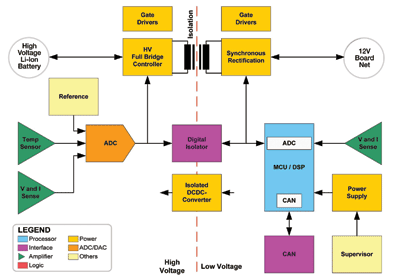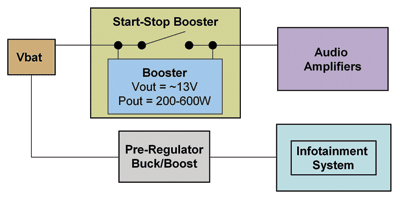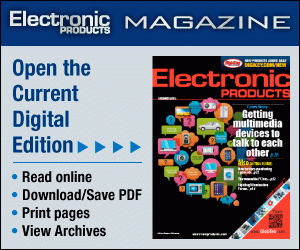Examples of how ICs can reduce fuel consumption, while giving the consumer a driving experience with modern features
BY MICHELLE HARTSELL
Texas Instruments, Dallas, TX
http://ti.com
Energy consumption and its impact on the environment are key concerns today. Transportation is a major component of the world’s energy demands, so enabling more fuel-efficient or alternative-energy-driven vehicles can have a significant impact on energy consumption. Electronic components can enable many different strategies for increasing fuel efficiency or for enabling the use of alternative energy for powering vehicles and other transportation platforms.
Some easy-to-implement non-electronic-based forms of reducing fuel consumption are to buy small cars with small engines, ensure the tires are properly inflated per the owner’s manual recommendations, refrain from jack-rabbit starts, advance trip planning, avoid driving in rush-hour traffic, driving the speed limit, and properly maintaining the vehicle. A great Web site for consumers to learn about different vehicles and their gas mileage and greenness prior to purchase is www.fueleconomy.gov. Beyond these measures, though, are dozens of electronic applications, some obvious and some less so, that can help reduce fuel consumption while maintaining a driver’s expectations for performance and features. Let’s take a closer look at some of these options.
Alternative-energy vehicles
Driving alternative-energypowered vehicles is obvious in terms of reducing greenhouse gas emissions and reducing the usage of fossil fuels. Plug-in hybrid electric or fully electric vehicles use power from the grid versus burning fuel in a standard combustion engine. While this is still a fossil-fuelbased power source with the mix of source on the grid moving more toward a higher percentage of renewable energy, this will become less of a fossil fuel-based source going forward.
Alternatively, battery packs are charged from the gas-powered engine or other fuel cells, as used in H2-powered vehicles. The standard 12-V-based electronics in the rest of the car cannot operate directly from the high-voltage battery that may be up to 800 V, so electronics are required to bring these voltages down to the correct input voltage for the 12-V electronics (see Fig. 1) .

Fig. 1. Block diagram of a dc/dc converter in hybrid electric vehicle / electric vehicle (HEV/EV).
In this case, a key enabling component is the digital isolator. These digital isolators enable safe operation by ensuring that noise currents do not enter the ground to interfere with the circuits or communications on the 12-V side of the system.
Another key concern in electric vehicles is monitoring the fuel gauge of battery packs and maintaining a charge balance among the cells. Specialty battery fuel gauge and cell-balancing components are key enablers of this technology. A variety of electronic components are also required for the charging systems and stations used to recharge the batteries in electric vehicles.
Other forms of alternative energy include biofuels and natural gas. When using biofuels, typically the engine control unit is programmed to handle the different fuel mixtures. This has been already implemented for many years in the U.S. for corn-based ethanol-blend fuels. The concept with alternative fuel blends is similar. Full biodiesel systems are in production in the U.S. and Europe with fuel often coming from reuse sources such as used cooking oil. In production in Brazil are vehicles that run on biofuel from sugar cane. For natural-gasbased systems, depending on whether the vehicle is equipped to run on a mixture of standard gasoline and natural gas, or fully on natural gas, the car will have different electronics component needs.
A complementary system to alternative energy-powered vehicles is the kinetic energy recovery systems (KERS). Formula 1 fans may remember that in the 2009 season some of the F1 teams implemented KERS systems in their race cars. The basic concept here is that you store the energy from kinetic energy events, such as braking, into a capacitor or other energy storage device for later use. There are various implementations of the KERS system, all of which require electronic components to facilitate.
Electronics assist with basics
Tire-pressure-monitoring systems. As mentioned earlier, in addition to being a safety concern, maintaining proper tire pressure is one method of maintaining stated mileage for your vehicle. Tire pressure monitoring systems (TPMS) can make the driver aware of any tire pressure deviations. The better systems measure the pressure directly inside the tire (as opposed to a derived method) and wirelessly communicate the data to the driver’s central display showing which tire requires maintenance. This is more user friendly than systems where the driver has to figure out which tire needs air.
Pressure measurement and temperature correction via electronic components and radio frequency chips to wirelessly communicate the data to the control unit and then to the driver’s display are examples of electronic component enablers of this type of technology. Several countries or governmental entities including the United States via the National Highway Traffic Safety Administration (NHTSA) now mandate some type of TPMS system.
Global positioning systems. Global positioning systems (GPS) for navigation are now ubiquitous. Another advantage besides helping you find your way to your destination is that these systems actually enable the driver to conserve fuel. This is accomplished by reducing the drive time from when a driver becomes lost, alerting the driver to traffic jams and road closures, suggesting alternative routes, as well as alerting the driver to service stations, dining and other roadside facilities. And as part of the emerging smart toll tag systems, GPS can also influence traffic patterns by notifying the driver of toll rate changes. These driver-assistance features can reduce car idle and commuting times, leading to improved fuel efficiency and reducing undesirable emissions.
Start-stop systems. Start-stop systems are already available in several car models, mostly in Europe. These systems significantly reduce car idle time by shutting off the car motor when the vehicle comes to a stop, then automatically restarts the car when the driver depresses the gas peddle or releases the clutch. The main concerns in this type of system are ensuring that all driver information, infotainment (example in Fig. 2 ) and other electronics remain on during the start-stop event, and that any motor-driven subsystems have alternative power supplies so they can remain operational during the engine-off cycle.

Fig 2. High-level block diagram showing infotainment head unit set-up for use in start-stop enabled vehicle.
Key enablers for a start-stop system are power systems that use multiphase buck controllers and boost controllers to keep the power constant to the 12-V net systems, even if the battery voltage drops below regular levels. Various sensors and feedback loops are also needed to see if the vehicle is in an appropriate state to support a start-stop event. Start-stop systems reduce emissions, especially in urban driving environments where stopping is frequent.
Electronic-based over hydraulic systems. Several weight-reducing applications are either available now or becoming available. Primarily, this is where hydraulic systems are being replaced with electronic-based systems similar to fly-by-wire in aircraft. Some examples include electronically assisted power steering or electronic braking systems. Motor drivers and torque and position sensors enable this type of technology. In addition to the weight savings, which translates into fuel savings, these systems reduce the use of carbon-based fluids in hydraulic systems.
Weight reduction. Another big weight savings for automotive electronic modules are advanced audio and power supplies. Class-D audio amplifiers enable big weight and space savings over class A-B audio amplifiers and provide excellent high fidelity at the same time. Using higher frequency switch-mode power supplies reduces the size of external components such as inductors, thereby reducing weight in the module. These types of higher efficiency power supply components also reduce weight by allowing the use of less heat sinking versus a linear regulator, which may require more copper area. Eliminating motors and related electronics or other convenience items is another way to reduce the weight of cars. In reality, however, most consumers still demand convenience features like electronic window lifts and convertible top mechanisms. Therefore, the challenge is to provide these conveniences as efficiently as possible through good power supply and motor design. ■
For more information about these and other automotive solutions, visit www.ti.com/auto-ca
Advertisement
Learn more about Texas Instruments





